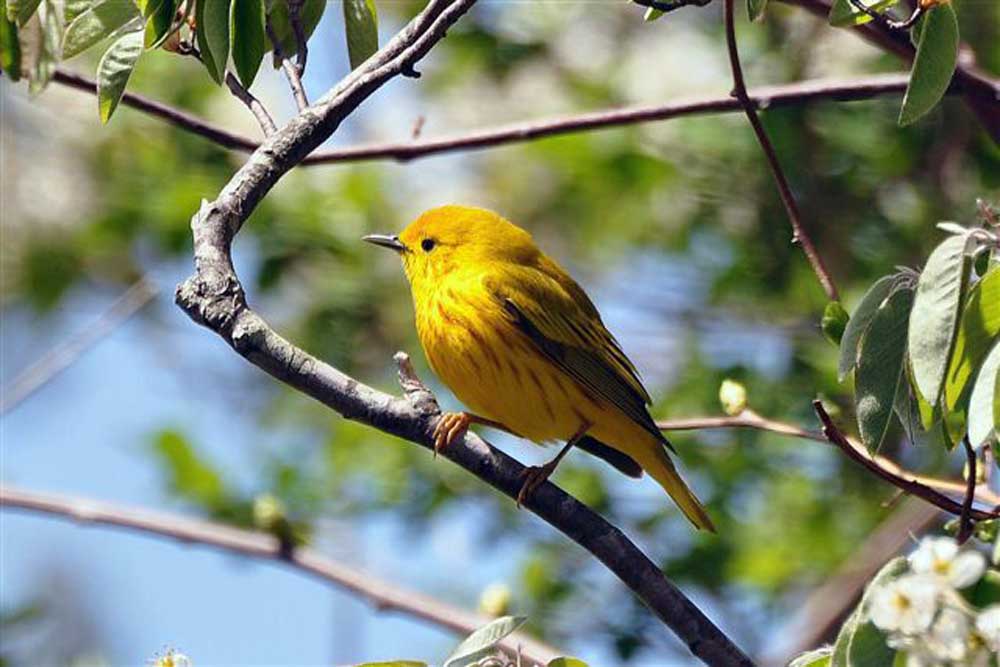Yellow warbler is a sweet bird
Published 12:00 am Wednesday, June 4, 2014

- Courtesy U.S. Fish and Wildlife Service / Submitted photoYellow warbler
Yellow warbler
Scientific name: Dendroica petechia
Characteristics: In general, these warblers average 5 inches in length, are yellow overall and have a small black bill and a prominent dark eye. The males have yellowish-green backs and distinct reddish streaks on their bright yellow breasts and bellies. The females have faint or no reddish streaks on their breast. There is regional plumage variation; birds in northern areas have more olive-green backs than those in the south.
Nesting: The female builds a cup-shaped nest made of grass, bark, lichens and plant stalks, and then lines it with spider silk or plant down. The female lays an average of four to five whitish eggs; the eggs hatch in about 12 days, and the young fledge when 9 to 12 days old.
Range: Found throughout much of North America during migration or the breeding season. These warblers winter throughout Central America and northern South America. Different forms of the yellow warbler reside in Mexico, Central America and the Caribbean.
Habitat: Often found in deciduous or riparian habitat that includes willows, alders, cottonwoods, aspen or ornamental trees, orchards and second-growth forests.
Food: Very active feeders, these birds glean insects, caterpillars, beetles and spiders from leaves, bark and twigs. They may hover to glean insects from vegetation or catch them in flight.
Comments: These birds are often observed in spring migrating in groups and hawking insects in flight. A group of warblers is known as a “bouquet” or “confusion.” Dendroica means “tree dweller,” and petechia is from Latin meaning “red spots on the skin,” in reference to the red streaks. The birds have a rapid song that sounds like “sweet, sweet, sweet, I’m so sweet.” Yellow warbler nests may be parasitized by brown-headed cowbirds, which lay their eggs in the warbler’s nest. The warblers may abandon the nest or build another one atop the first one and lay another clutch of eggs; six tiers of nests have been observed.
Current viewing: Many locations in Central Oregon, including Sawyer Park, Shevlin Park, Malheur National Wildlife Refuge, Black Butte Swamp and along the Metolius River.
— Damian Fagan is a COCC Community Learning instructor and volunteer with the East Cascades Audubon Society. He can be reached at damian.fagan@hotmail.com.
Sources: “The Audubon Society Encyclopedia of North American Birds” by John Terres, Cornell Lab of Ornithology’s www.allaboutbirds.org and “Birds of Oregon” by Burrows and Gilligan






